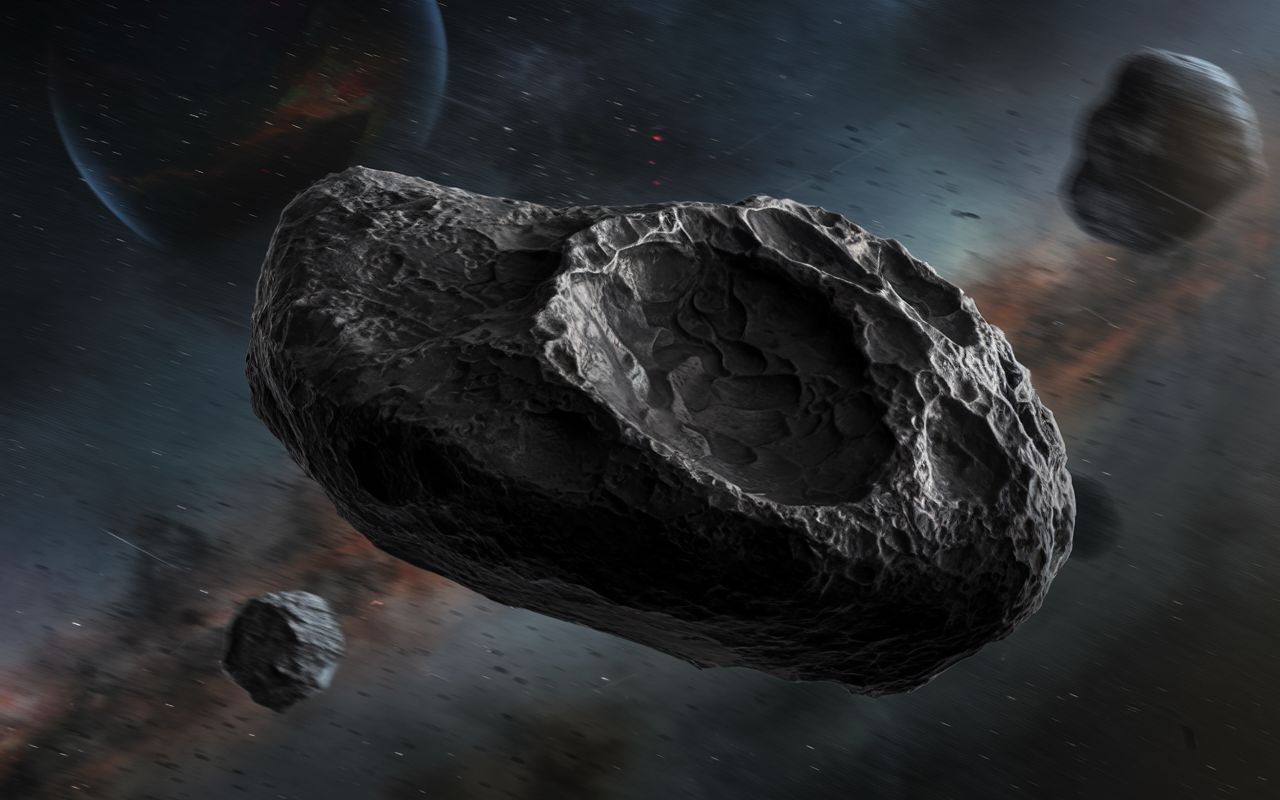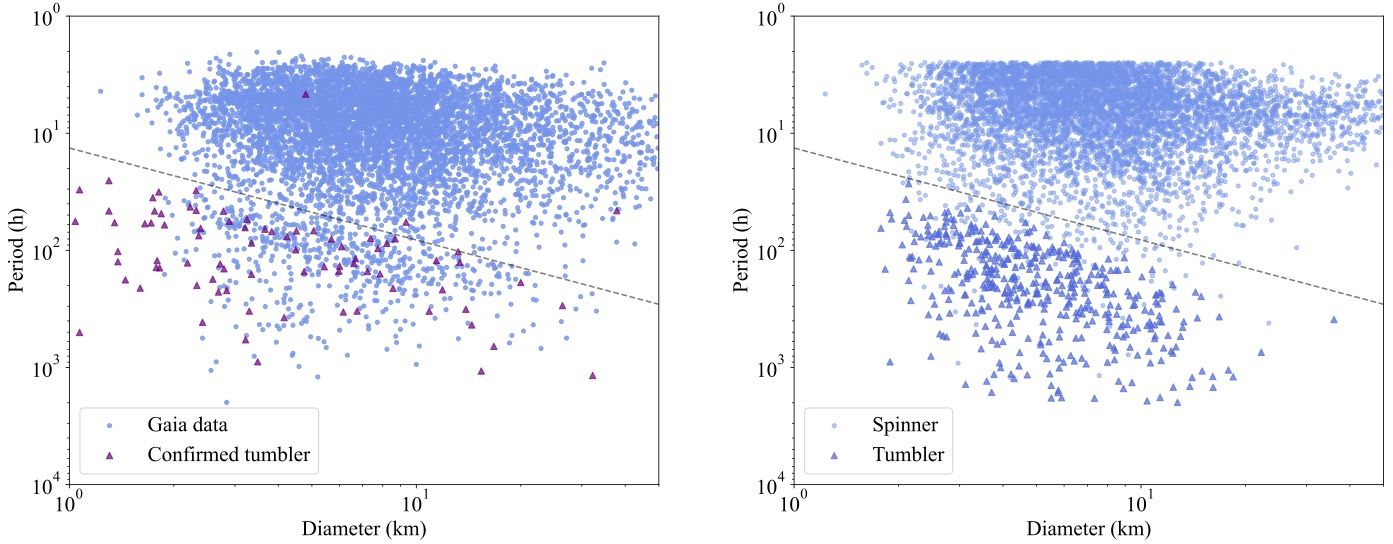💫 Asteroid rotation: a highly important source of information
Follow us on Google News (click on ☆)
The team led by Dr. Wen-Han Zhou, primarily based at the Côte d'Azur Observatory in France, developed an innovative model explaining this separation. Their approach integrates two opposing phenomena: collisions in the asteroid belt that disrupt rotation, and internal friction that tends to stabilize the motion. Collisions can cause asteroids to tumble into a state of chaotic rotation called 'tumbling', while internal friction gradually returns them to stable rotation around a single axis.

The application of artificial intelligence tools to Gaia data confirmed the model's predictions with remarkable accuracy. Asteroids located below the separation line exhibit slow and disordered rotations with periods less than 30 hours. Those above rotate faster and more regularly.
The effect of sunlight also plays a determining role in this dynamic. For asteroids in stable rotation, the absorption and re-emission of photons creates a constant thrust that can gradually accelerate or slow their rotation. In contrast, for asteroids in chaotic rotation, this thrust is neutralized because different parts of the surface are randomly exposed to the sun. This absence of directional effect maintains asteroids in a state of slow and disordered rotation.
These discoveries have important practical implications for planetary defense. Understanding the link between rotation and internal structure allows deduction of asteroids' mechanical properties. The data supports the image of asteroids as 'rubble piles' - loosely bound debris heaps with many cavities covered in regolith. This structure directly influences how an asteroid would respond to a deflection mission like NASA's DART.
Future observations from the Vera C. Rubin Observatory will allow application of this method to millions of asteroids. This approach promises to revolutionize our understanding of the evolution and composition of small Solar System bodies, while providing information to protect our planet from potential impacts.

Left: Gaia observational data showing the distribution of asteroids according to their rotation period and diameter. Asteroids in chaotic rotation ("tumblers") are identified using the LCDB database.
Right: results of numerical simulations reproducing this distribution. The gray lines indicate a marked gap in the distribution.
The YORP effect: how sunlight influences asteroid rotation
The YORP effect (Yarkovsky-O'Keefe-Radzievskii-Paddack) describes how thermal radiation emitted by an asteroid can modify its rotation speed. When an asteroid's surface absorbs sunlight, it heats up and re-emits this energy as infrared radiation.
This thermal emission produces a minuscule but cumulative thrust. The irregular shape of the asteroid means this thrust is not uniformly distributed, creating a net torque that can accelerate or slow the rotation. The effect is particularly significant for small asteroids whose surface area is large relative to their mass.
Over timescales of millions of years, the YORP effect can radically transform an asteroid's rotation. It can either synchronize its rotation or, conversely, accelerate it until causing the object to disintegrate due to centrifugal force.
Understanding this effect allows astronomers to trace the thermal and rotational history of asteroids, providing clues about their age and evolution in the Solar System.
The internal structure of asteroids: cosmic debris piles
Most asteroids are not monolithic rocky blocks but rather 'rubble piles' - aggregates of fragments held together by weak gravity. This particular structure results from billions of years of successive collisions that broke apart and reassembled primitive materials.
These piles exhibit significant porosity, with up to 50% void in their total volume. This structure explains their low average density and particular mechanical behavior. During an impact, energy is absorbed and dispersed through the network of fragments rather than concentrated at one point.
The surface of asteroids is typically covered by a layer of regolith - fine dust produced by continuous micrometeorite bombardment. This layer can reach several meters in thickness on the largest asteroids and modifies their thermal and mechanical properties.
Understanding this internal structure is important for space missions aiming to sample or deflect asteroids. A 'rubble pile' will respond differently to an impact than a solid body, requiring specific approaches for planetary defense operations.